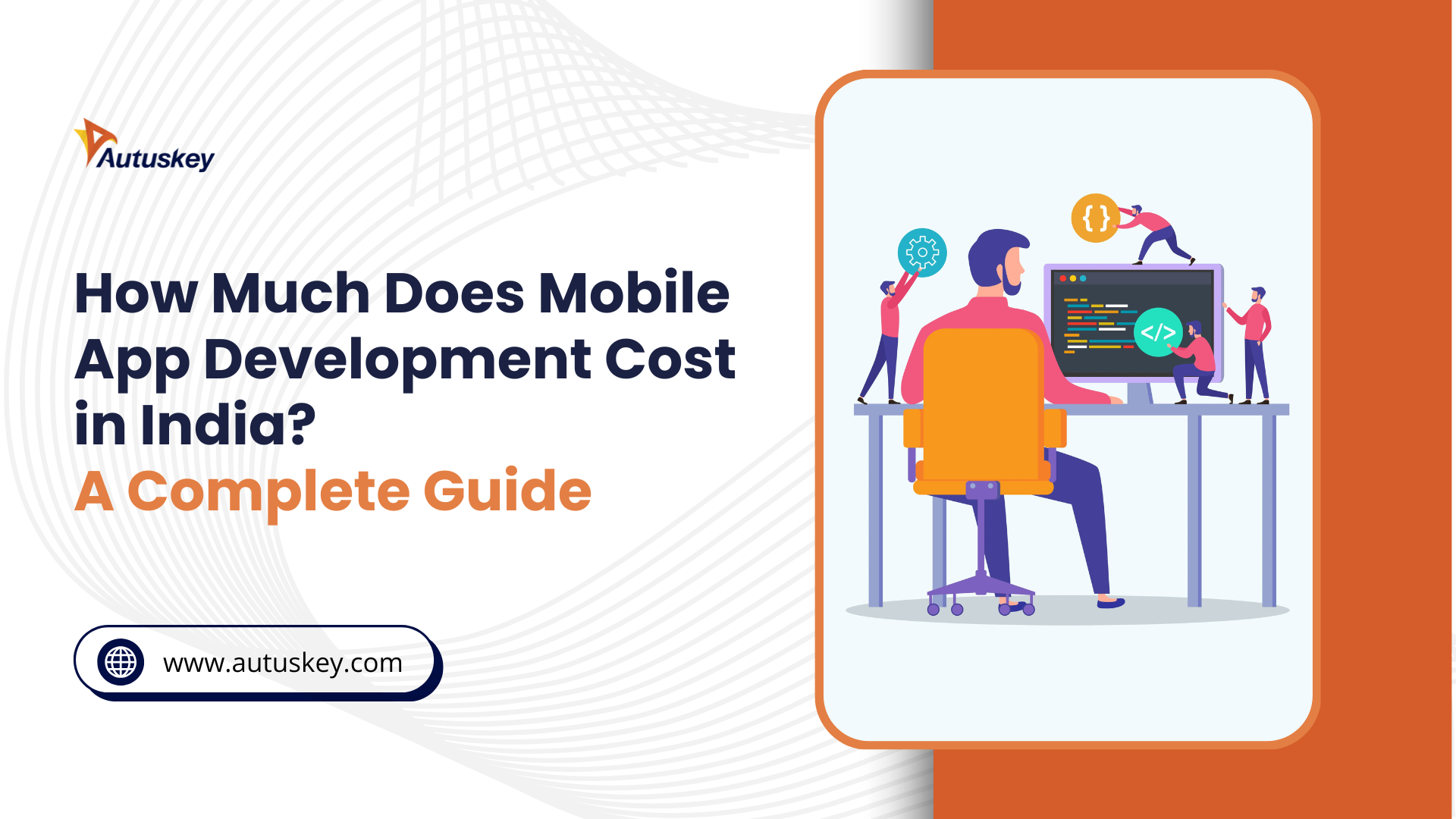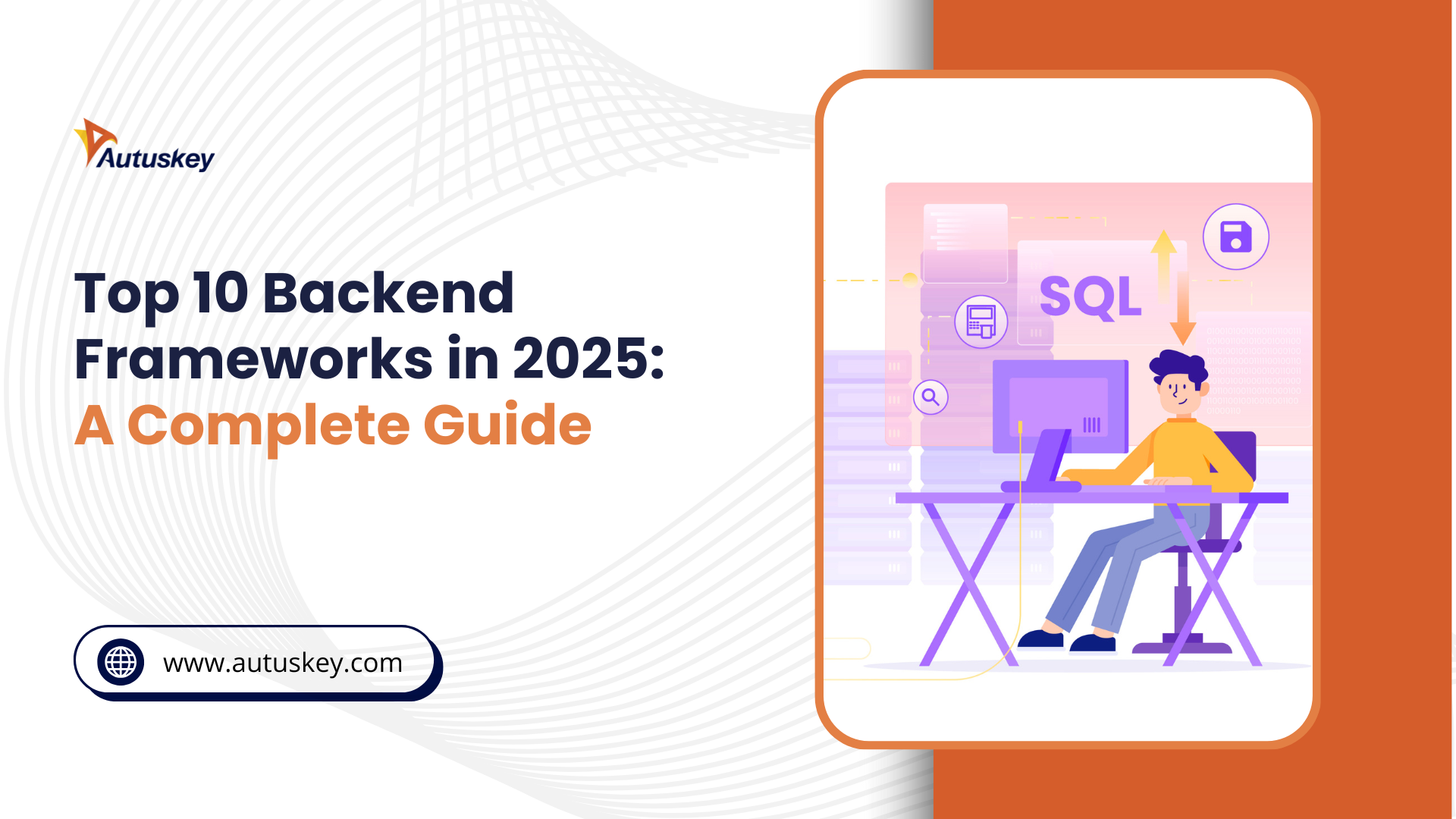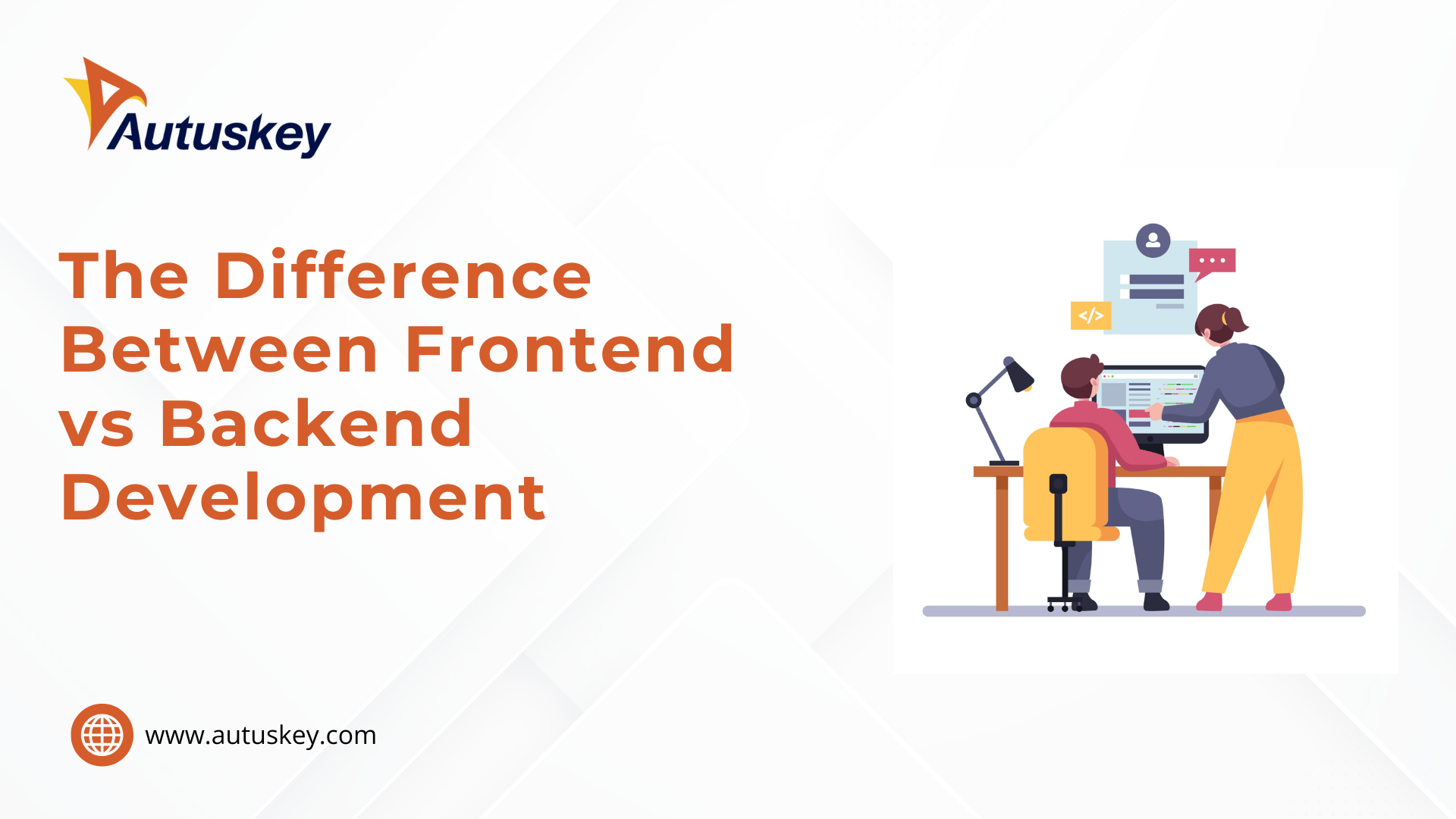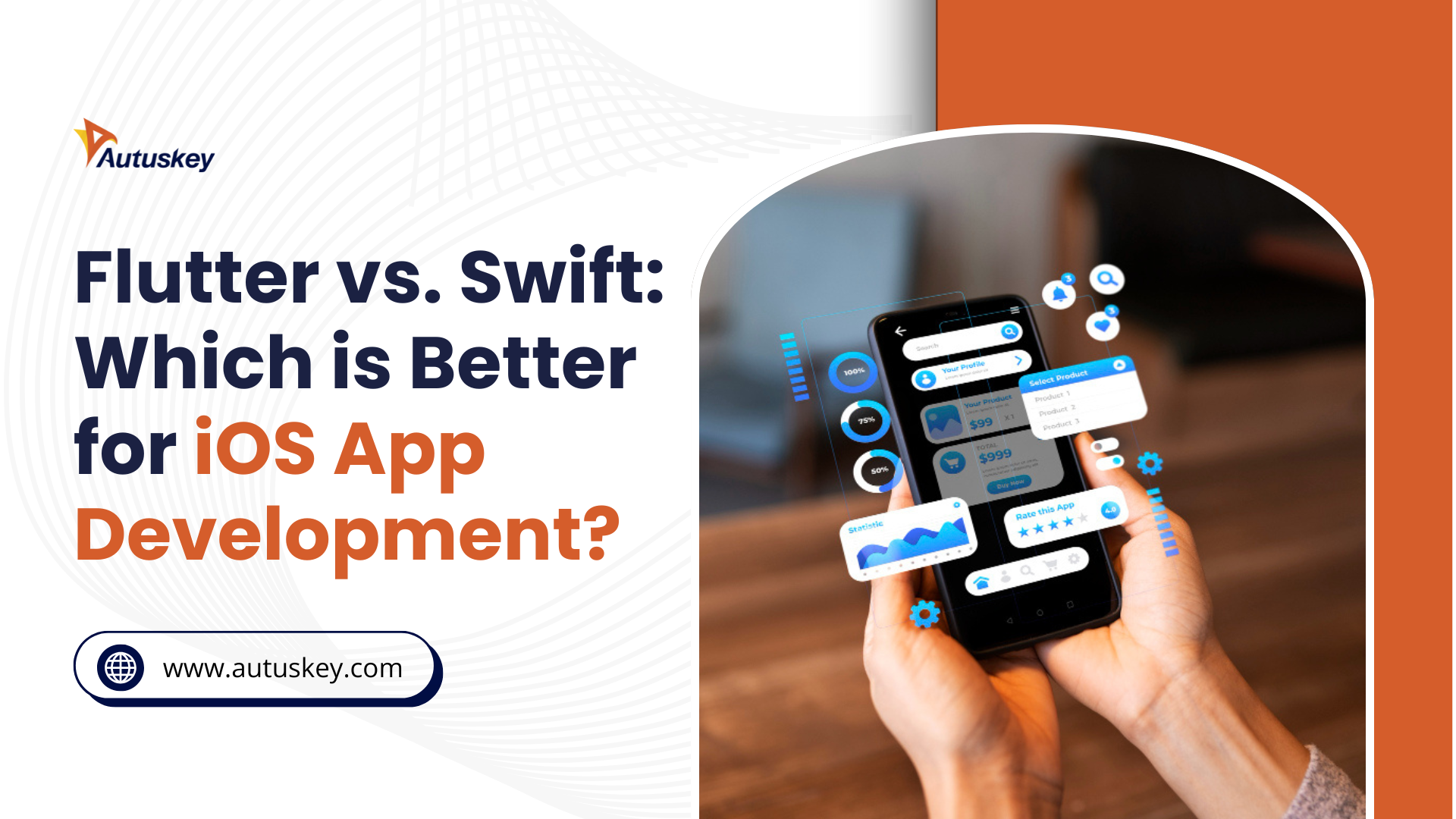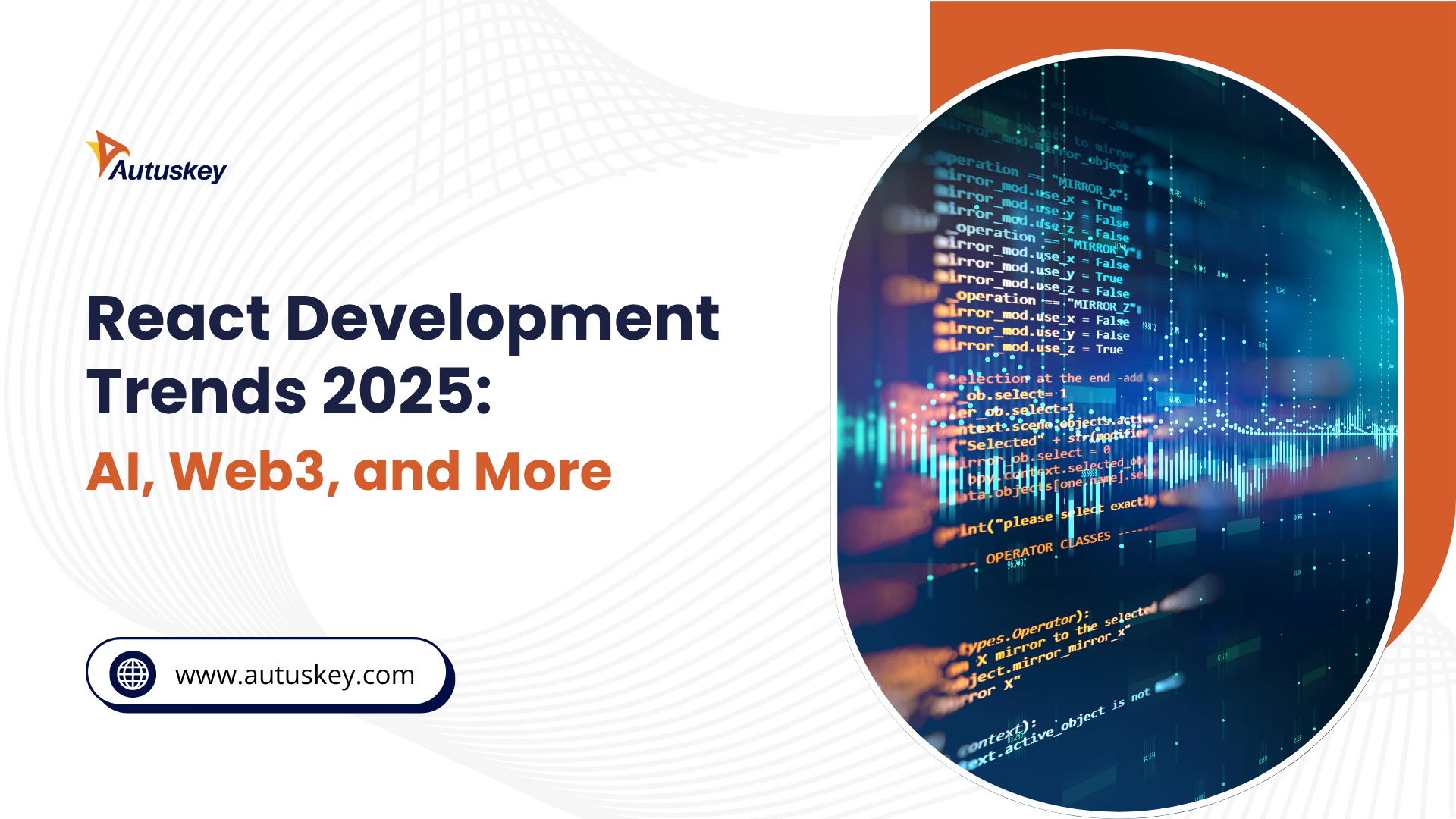The most popular backend frameworks in 2025 could be the reason your app scales or crashes. They are shaping how developers build faster, smarter, and more secure digital platforms.
From lightweight web backend frameworks to robust backend TypeScript framework options, the landscape has never been more diverse or more important.
Startups want speed. Enterprises want structure. Everyone wants fewer bugs and faster delivery. But the wrong backend technologies framework can slow progress, raise costs, and frustrate teams.
That’s why knowing what is the best backend framework for your project is critical in 2025.
In this blog, we will break down the most popular backend frameworks of 2025, compare their strengths, and help you pick the perfect match.

What Is a Backend Framework?
A backend framework is a collection of tools and libraries that help build the server-side of an application. Further, it handles databases, APIs, and server logic with structured and reusable code.
Most popular backend frameworks help developers write clean, fast, and scalable backend code efficiently. Additionally, they also improve team productivity and reduce development errors.
Why Choosing the Right Backend Framework Matters in 2025
In 2025, the best backend for mobile app development will impact speed, code quality, and future maintenance of your product. Moreover, the decision shapes how your app performs during traffic spikes and complex processing.
Therefore, choosing from the most popular backend frameworks is more important than ever.
Let’s explore why your choice really matters:
First, some web backend frameworks are easier to use for small teams or solo developers.
Then again, the most popular backend frameworks may perform better under heavy load.
Also, a backend typescript framework helps if your frontend uses TypeScript too.
On top of that, each backend technologies framework has different levels of community support.
Finally, knowing what is the best backend framework depends on your project’s goals, not popularity.
Clearly, choosing from the most popular backend frameworks depends on your team, goals, and future plans. Besides that, using well-known backend technologies frameworks improves app performance and reduces long-term costs.
Top 10 Backend Frameworks to Use in 2025
With so many backend options today, knowing which one to pick can feel overwhelming.
That’s why we’ve analyzed the most popular backend frameworks for 2025 based on real-world use, speed, and support. Additionally, this list covers strengths, limitations, and best-fit use cases for each choice.
Let’s dive into the most used and best backend frameworks trusted by developers in 2025:
Django (Python):
Django is one of the most popular backend frameworks that powers high-traffic platforms like Instagram and Pinterest.
It follows the “batteries-included” principle, which means it comes packed with tools to build apps faster. Since it is based on Python, beginners and pros alike find it easy to start.
Pros
Django speeds up development by removing the need for third-party plugins. Also, it has strong security, which protects from common attacks like CSRF and SQL injection.
In addition, this backend technologies framework has detailed documentation and a large, active community.
Cons
Despite being the most popular backend frameworks, Django is not ideal for lightweight apps or microservices. Moreover, it follows strict patterns that can limit custom architecture decisions.
Sometimes, beginners struggle with Django’s structure when shifting from simpler web backend frameworks.
Best For
What makes Django one of the most popular backend frameworks is that it is the best for data-heavy projects like CRM tools, dashboards, and admin panels. In fact, it is also used for e-commerce apps and social network websites.
This framework suits anyone searching for what is the best backend framework with built-in security features.
Ultimately, Django remains a top choice in the list of frameworks due to its balance of power and simplicity. Furthermore, it ranks high among the most used backend frameworks for enterprise and startup teams alike.
Whether you’re scaling fast or prototyping, Django is worth considering in 2025.
Express.js (Node.js):
Express.js is one of the most flexible and popular backend frameworks built on top of Node.js. Because of its minimal design, it allows developers to build fast and lightweight REST APIs easily.
As a result, Express continues to rank among the most popular backend frameworks worldwide.
Pros
To begin with, Express is fast and handles thousands of requests with low memory use. Also, it supports many middleware libraries, making it easy to extend functions without extra load.
Not only that, it fits perfectly with modern frontend stacks like Angular and React.
Cons
Although being the most popular backend frameworks, Express lacks built-in structure, so beginners may find it confusing.
Besides that, manual setups for routing, sessions, and security are time-consuming. Therefore, it may not be ideal for large teams that prefer strict workflows in backend TypeScript frameworks.
Best For
Express is perfect for building microservices, RESTful APIs, and SPAs that require quick performance. It’s also a go-to backend technologies framework for real-time apps like chats or notifications. This makes it among the most popular backend frameworks.
Those needing a lean and fast option from the list of frameworks should try Express.js.
In summary, Express is one of the most used backend frameworks for developers who want freedom and full control. Additionally, it integrates well with many tools, which makes it a key choice in web backend frameworks.
If speed and flexibility are your priorities, Express should be on your shortlist.
Laravel (PHP):
Laravel remains a fan favorite among the most popular backend frameworks, especially for PHP developers.
It has an elegant syntax, strong features, and a robust ecosystem that helps reduce repetitive coding tasks. What’s more, Laravel is built for teams that value clean, readable code.
Pros
Laravel includes built-in tools for routing, security, and authentication. Moreover, it supports MVC architecture, which keeps your codebase organized and scalable.
In fact, its Blade templating engine also allows easy integration with frontend views.
Cons
Despite being the most popular backend frameworks, Laravel apps can become slow without proper optimization. Also, PHP itself is declining in popularity compared to newer backend technologies frameworks.
Some developers feel Laravel has too many “magic” features that hide real logic.
Best For
Laravel is great for startups and businesses looking to launch MVPs and simple platforms fast. Subsequently, it’s also ideal for blog systems, CMS tools, and booking platforms.
If you’re choosing from the list of frameworks that focus on fast delivery, Laravel fits well.
Laravel still holds strong as one of the most popular backend frameworks because of its simplicity and built-in features. Furthermore, it belongs in any discussion of what is the best backend framework for PHP-based projects.
Its learning curve is gentle, yet powerful enough for large apps.
Spring Boot (Java):
Spring Boot is among the most enterprise-ready and most used backend frameworks today.
It simplifies Java development by reducing boilerplate code and supporting microservice architecture. That’s why it's widely trusted by banking, healthcare, and large-scale B2B applications.
Pros
Spring Boot supports layered architecture and has strong support for unit testing. Additionally, it also includes tools for monitoring, metrics, and app configuration.
Another advantage is seamless database integration using JPA and Hibernate. This makes it among the most popular backend frameworks.
Cons
Spring Boot may feel too heavy for small-scale applications. Consequently, its complex setup is a barrier for beginners. Besides, Java requires more code than other web backend frameworks like Python or JavaScript.
Best For
Spring Boot is ideal for fintech platforms, enterprise CRMs, and high-security systems. It suits projects that need performance, security, and complex logic handling.
This backend technologies framework stands out in the list of frameworks for long-term, large projects.
In conclusion, Spring Boot is a reliable pick from the most popular backend frameworks in 2025. Its ability to handle massive loads and complex business logic makes it a go-to for serious developers.
If you work in regulated industries, this is one of the best backend frameworks to choose.
Ruby on Rails:
Ruby on Rails, also called RoR, is one of the most popular backend frameworks known for rapid development. It follows convention over configuration, which means developers can skip repetitive decisions and focus on logic.
Additionally, it powers platforms like GitHub and Shopify with ease.
Pros
What makes Ruby on Rails among the most popular backend frameworks is that it simplifies routing, database work, and user authentication out of the box. Also, it has rich libraries, making development faster and more productive. Moreover, its strong community makes it easier to find plugins, guides, and help online.
Cons
Rails apps can feel slow without good optimization, especially when scaling. Moreover, the learning curve may be steep for those new to Ruby. Besides that, debugging can become difficult when dealing with hidden logic.
Best For
Ruby on Rails is great for building MVPs, eCommerce sites, and content platforms. It fits teams needing to move quickly with fewer developers. Hence, if you’re exploring the list of frameworks for productivity, this one stands out.
Rails remains one of the most used backend frameworks, especially among startups. It continues to rank among the most popular backend frameworks for fast delivery and clear structure. So, it’s a solid choice for clean, organized backend work.
ASP.NET Core (C#):
ASP.NET Core by Microsoft is a cross-platform, open-source backend technologies framework built with C#. It supports Windows, Linux, and macOS, making it ideal for developers across systems. Moreover, it remains part of the most popular backend frameworks for enterprise use.
Pros
ASP.NET Core supports dependency injection and built-in middleware. As a result, it helps in boosting modularity. In addition, it delivers fast runtime and performance across heavy-use applications. Moreover, its integration with Visual Studio improves development productivity.
Cons
ASP.NET Core can be too structured for small or flexible teams. Besides that, C# syntax may be challenging for beginners used to dynamic languages. Lastly, it requires more memory than lighter web backend frameworks.
Best For
ASP.NET Core is best for large-scale web apps, banking and financial systems, and enterprise solutions. It works well when security and speed matter most. Among backend technologies frameworks, it's perfect for projects requiring long-term stability.
ASP.NET Core is one of the most popular backend frameworks for high-performance apps. Subsequently, it works across platforms and supports modern practices. Therefore, if you're asking what is the best backend framework for serious projects, this is a top choice.
Flask (Python):
Flask is a lightweight Python framework often used for microservices and small web applications. Because it’s minimal, developers get more flexibility and control over architecture. In fact, it ranks among the most popular backend frameworks used by Python developers.
Pros
Flask is simple to set up and easy to understand, especially for beginners. Additionally, it supports extensions that can be added as needed. Also, it pairs well with modern frontend tools.
Cons
Flask lacks built-in tools like ORM or authentication. Therefore, that means you write more code compared to other web backend frameworks. Moreover, large projects can become hard to manage without a set structure.
Best For
Flask is the most popular backend frameworks as it suits quick APIs, prototypes, and educational apps. Hence, it is ideal for solo developers who want full control. Thus, if you want a basic, clean backend typescript framework alternative, Flask is a great start.
Flask belongs to the list of frameworks that are lightweight yet powerful. It continues to be one of the most used backend frameworks among developers who prefer customization. So, it holds a valuable place in modern web backend frameworks.
NestJS (TypeScript):
NestJS is a rising backend TypeScript framework built on top of Node.js.It combines object-oriented programming with modern TypeScript syntax. As a result, it has quickly become one of the most popular backend frameworks for scalable projects.
Pros
NestJS supports modules and decorators, helping organize code neatly. Subsequently, it integrates with TypeORM, GraphQL, and other key tools. Also, its structure is ideal for clean architecture.
Cons
Since NestJS uses TypeScript heavily, there's a steeper learning curve for JavaScript developers. Additionally, it can feel too structured for small teams. Moreover, some third-party libraries may lack full NestJS support.
Best For
NestJS is perfect for modern web apps, SaaS platforms, and APIs built with microservice architecture. It’s one of the most popular backend frameworks for TypeScript lovers. If you want a strict structure, it's among the best backend framework options.
NestJS blends speed and structure well. That’s why it continues to rise in the list of frameworks used in scalable applications. Its popularity in backend technologies frameworks will likely grow further in 2025.
Gin (Go):
Gin is a web backend framework written in Go (Golang) that focuses on speed and simplicity. It’s lightweight, fast, and perfect for projects that need quick request handling. Because of its performance, it ranks among the most popular backend frameworks.
Pros
Gin uses minimal memory and delivers high-speed routing. Further, it supports middleware and has built-in error handling. Not only that, but it's also easy to deploy in production environments.
Cons
Although Gin is among the most popular backend frameworks, it lacks advanced built-in tools, so you’ll need to write more features manually. Also, it may not be best for beginners. Moreover, Go’s strict typing may slow down some workflows.
Best For
Gin is best for real-time apps, analytics tools, and lightweight API development and integration. It suits developers who prefer low-level control. From the list of frameworks focused on performance, Gin stands out.
Gin remains one of the most popular backend frameworks for speed-critical apps. Its performance makes it one of the best backend frameworks for developers who need simple, fast code. In 2025, it will remain a strong contender.
Actix Web (Rust):
Actix Web is a fast and secure web backend framework built using Rust. Because it’s memory-safe and extremely fast, it’s gaining traction among modern developers.
Subsequently, it’s climbing the ranks among the most popular backend frameworks for system-level performance.
Pros
Actix Web delivers unmatched speed and safety due to Rust’s ownership model. Additionally, it supports WebSockets, async programming, and advanced routing. Also, it’s very stable in production use.
Cons
Actix Web has a steep learning curve, especially for those unfamiliar with Rust. Its syntax can feel complex and verbose. Also, library support is smaller than in older backend technologies frameworks.
Best For
Actix Web is the most popular backend frameworks as it is ideal for fintech, real-time games, and systems that demand strong performance. It suits developers who value memory safety and low latency. Therefore, if you seek modern security, it’s one of the best backend framework choices today.
In short, Actix Web is a future-proof option for developers who prioritize performance. Among the most popular backend frameworks, it represents the shift toward low-level control and high speed. By 2025, it may become a go-to choice in high-security sectors.
Comparison Table of Backend Frameworks
Framework | Pros | Cons | Best For |
Django (Python) | Fast development, secure by default, strong community | Heavy for small apps, strict patterns | Data-heavy apps, CMS, and dashboards |
Express.js (Node.js) | Lightweight, fast, easy integration with the frontend | Lacks structure, needs manual setup | REST APIs, SPAs, microservices |
Laravel (PHP) | Elegant syntax, built-in tools, strong PHP ecosystem | Slower performance, steep learning curve | MVPs, eCommerce, content-driven sites |
Spring Boot (Java) | Enterprise-ready, strong security, layered architecture | Heavy setup, verbose syntax | Financial systems, CRMs, enterprise platforms |
Ruby on Rails | Convention-based, great for rapid builds, mature community | Slower at scale, debugging complexity | eCommerce, MVPs, social apps |
ASP.NET Core (C#) | High performance, cross-platform, strong Visual Studio support | Complex for small teams, heavy memory usage | Large-scale enterprise, regulated apps |
Flask (Python) | Minimal, flexible, beginner-friendly | Lacks built-in tools, no clear structure | Microservices, learning projects, quick APIs |
NestJS (TypeScript) | Modular, clean code, excellent TypeScript support | Steeper learning curve, some library gaps | SaaS apps, scalable APIs, microservices |
Gin (Go) | Fast, minimal memory use, production-ready | Fewer built-ins, not beginner-friendly | Real-time services, analytics, performance-critical apps |
Actix Web (Rust) | Ultra-fast, memory safe, async ready | Difficult syntax, small ecosystem | Fintech, games, secure and scalable system-level apps |
How to Choose the Right Backend Framework for Your Project
Choosing the best backend for mobile app development is not a one-size-fits-all decision. You must think about your goals, team size, and future scale.
Also, comparing the most popular backend frameworks helps narrow choices that suit your project type. In contrast, using the wrong one can delay launches and raise long-term costs.
That being said, use the following criteria to decide wisely:
Team Skills: Choose a framework your team is already familiar with, like Laravel, Flask, or Spring Boot.
Project Size: Lightweight web backend frameworks like Express or Flask work better for MVPs and smaller tools.
Scalability Needs: For apps that may scale fast, pick backend technologies frameworks like Django or ASP.NET Core.
Security Requirements: If you need top security, explore the list of frameworks like Actix Web and Spring Boot.
Ecosystem & Support: Popular backend frameworks like NestJS or Ruby on Rails have strong communities and tools.
As you can see, the most popular backend frameworks fit different needs and goals. Likewise, your final choice depends on your app’s performance, user load, and maintenance plans. So, always match your framework with your project's core demands.
In 2025, selecting from the most popular backend frameworks is a big part of project success. Besides that, knowing what is the best backend framework helps save effort, money, and time.
Whether it’s a backend TypeScript framework or a full-stack PHP tool, align your pick with purpose.
Backend Framework Trends to Watch in 2025
Backend development is moving fast, and the most popular backend frameworks are changing with it.
Interestingly, many shifts are happening due to AI, real-time needs, and faster frontend tools. Therefore, developers are now choosing the most popular backend frameworks based on both speed and flexibility.
Watch these backend trends closely in 2025:
TypeScript-first Frameworks: NestJS and similar backend TypeScript framework choices are gaining strong traction.
Rust and Go Popularity: Frameworks like Actix Web and Gin are climbing in the list of frameworks for raw speed.
Microservice Architecture: Most used backend frameworks are now built with small service-based modules.
Cloud Integration: Popular backend frameworks are easier to run on platforms like AWS and Azure.
AI and Automation: Web backend frameworks now support smoother AI and machine learning integrations.
Clearly, the most popular backend frameworks will look different by the end of 2025. In the same way, what is the best backend framework will depend more on the use case than the trend.
So, it’s smart to keep your stack updated based on current and upcoming backend technologies frameworks.
Final Thoughts: What Should You Choose in 2025?
With so many choices available, picking from the most popular backend frameworks depends on your project’s size, goals, and team experience. Whether you need speed, structure, or easy deployment, every backend technologies framework listed has its strengths and limits.
As we’ve seen, web backend frameworks like Flask and Express work well for quick builds, while ASP.NET Core or Spring Boot handle complex apps.
On the other hand, if you prefer a backend TypeScript framework, NestJS is gaining momentum in 2025. So, always align your backend with your team’s skills and app needs to make the best decision.
Choosing from the most popular backend frameworks is easier when you understand real use cases, pros, and limits. Each popular backend framework on this list has a strong community and real-world use.
Whether you're working with backend technologies framework like Django or exploring newer tools like Actix Web, focus on long-term growth.
At Autuskey, we help startups and enterprises build scalable, modern solutions using the most popular backend frameworks available in 2025.
Contact us today to launch your project with the right tech stack. Our expert team can guide you through backend decisions, development strategy, and full-scale deployment for lasting results.

FAQs
What are the most popular backend frameworks?
The most popular backend frameworks in 2025 include Django, Express.js, Laravel, Spring Boot, and NestJS. These frameworks lead due to speed, ease, and developer support.
Which backend framework is best for beginners?
Flask and Express.js are among the most popular backend frameworks for beginners due to their simplicity and flexibility.
How to choose a backend framework?
To pick from the most popular backend frameworks, consider team skills, app size, required speed, and long-term goals.
Which backend frameworks are best for performance/scalability?
Among the most popular backend frameworks, Spring Boot, ASP.NET Core, Actix Web, and Gin deliver high scalability and top performance.
What language is best for backend development?
Python, JavaScript, Java, and Rust are widely used with the most popular backend frameworks in 2025 for flexibility and speed.
Are backend frameworks secure?
Yes, most popular backend frameworks like Django, Spring Boot, and Laravel offer built-in features that strengthen backend security.












